A couple of weeks ago I was sitting around with friends discussing patents, as one does, and my friend Ken started talking about the patents of barbed wire, and how there are many different kinds, with different barb twists or different ways of entwining the wire to create separate patents. Then he said, “Would you like to see my barbed wire collection?”
Barbed wire collection!! Boy, would I! YES! So he went away and came back with a box full of … well, look!

Some of them were labelled, and most seem to come from the 1880s. Apparently the collection and trade of barbed wire (sold in 18-inch lengths) supports quite a large community. Ken also loaned me a book, which has terrific drawings of the knots and wire formations, identified with wonderful names like “Perry’s Cross Stick, Odd Strands” and “Armstrong Doolittle’s Notched Diamond.” It then gives a brief description, sometimes a date and inventor, and patent number.

This patent thing is the surprising part of barbed wire’s history. From the Introduction of Barbs, Prongs, Points, Prickers and Stickers, barbed wire “developed into a source of wealth and furious litigation colored by impassioned charges and countercharges of patent infringement and greed.”
For most of us, barbed wire is something we know exists, but few city people have used it, and I have certainly never given any thought to it, or whether there might be different kinds, let alone that it was once a furiously competitive business. 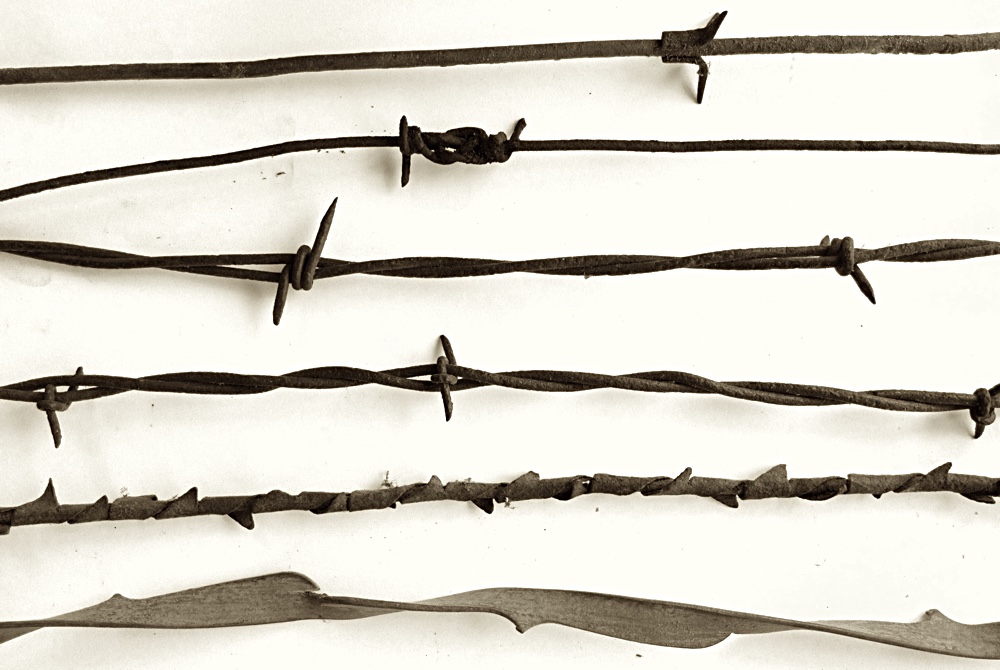
Despite my genuine interest in Ken’s collection, I confess my imagination did not anticipate the extent of variation in these wires. I find them fascinating and beautiful. The one at the bottom of the image above might be Allis’ Black Hills Ribbon from 1893, and the one above it is Hallner’s Wrap, Single Cut from 1878.


The last wire in the image above might be Crandall’s Link, Twist-Loop Variation.
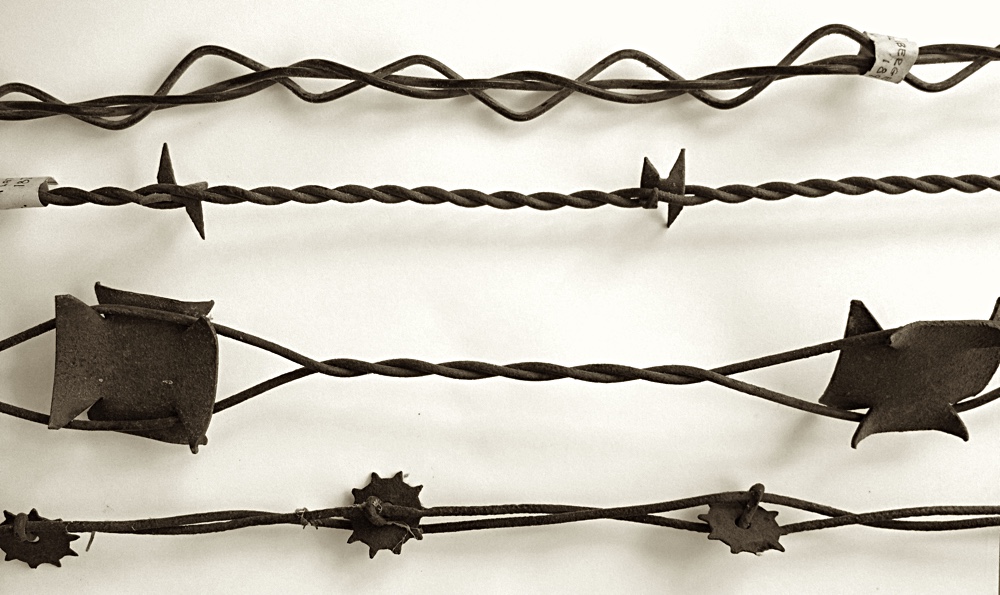
I particularly like the last two in the image above. The one with the big metal bits appears to be Stubbe’s Large Formee Cross, and the one below it is Hodge’s Spur Wheel, Ten-Point Variation.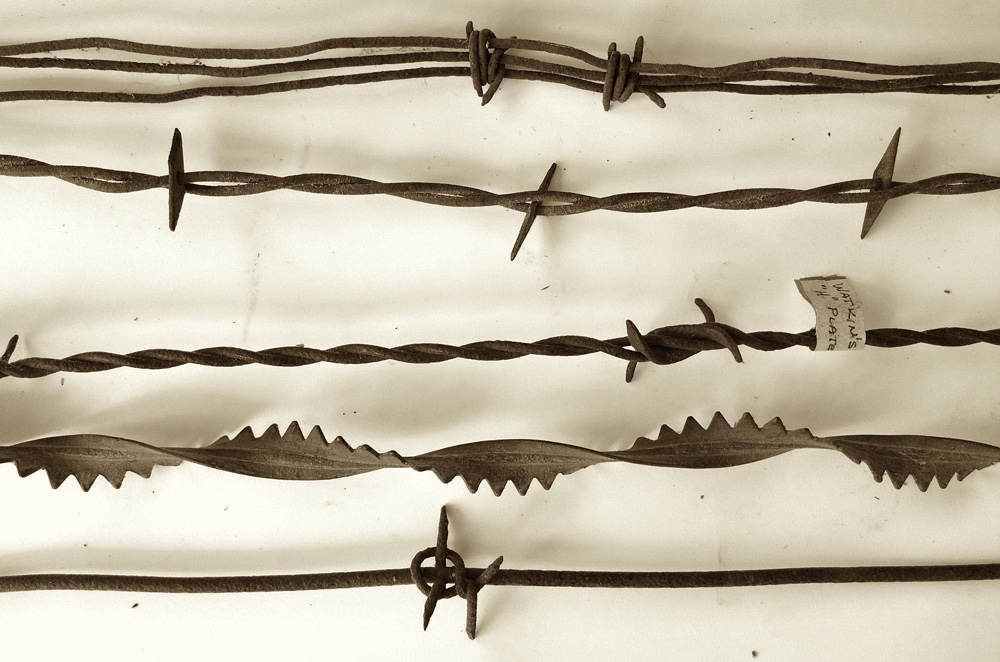
The 2nd-last one in the image above is Allis’ Ribbon, Small Saw-tooth Variation, and look at that crazily specific knot in the one below it. Third row in the image below is Huffman’s Ladder.
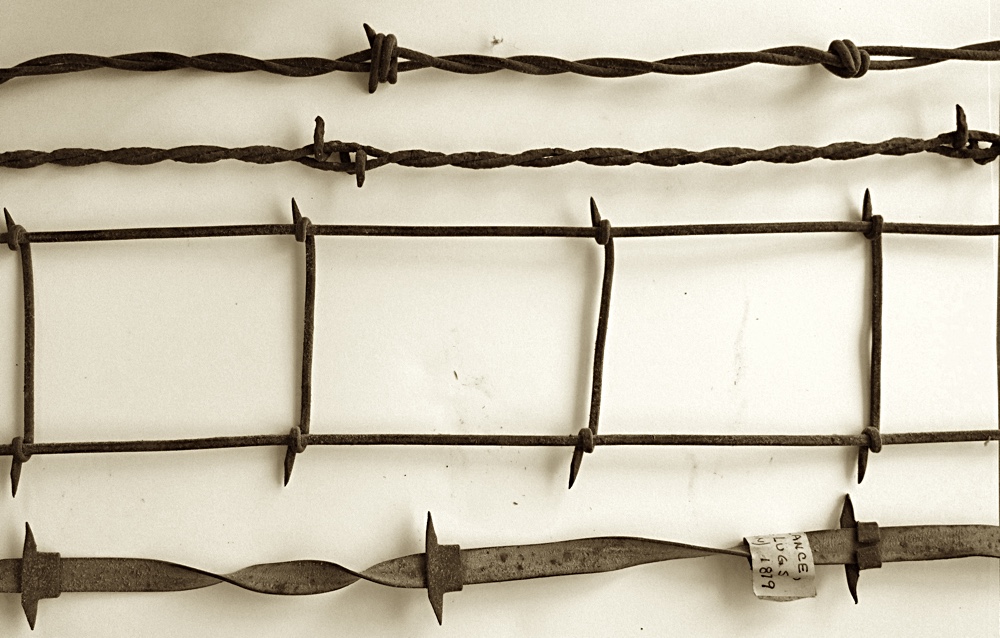

The last one above is Scutt’s Plate, Block and Arrow-point variation. Identifying these is hard because you really have to look at which way things twist or tie to get the exact right one. The number of turns in a wire or an extra loop in the knot can make the difference from one patent to the next. For instance there are a number of wires with that zig-zag plate running through them (second in the picture above) but notice how the zig-zag itself gets folded at certain points? That will make a difference from one to the next.
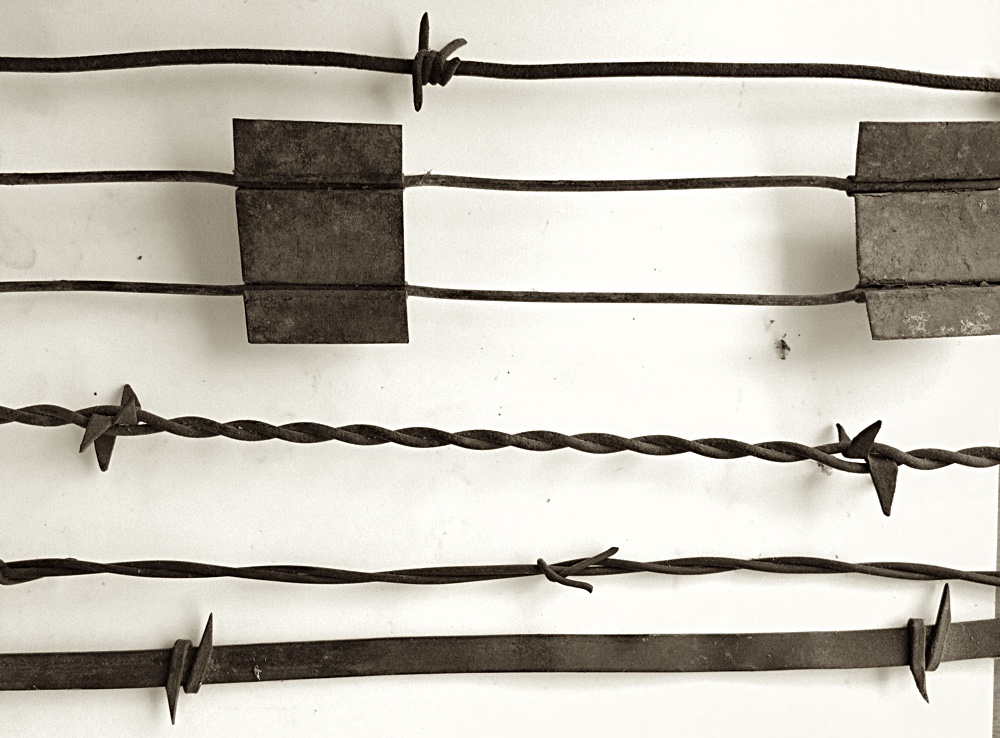
Barbed wire! Who knew? And there’s always more.
For more about the historical significance and social impact of barbed wire, read 99% Invisible’s “Devil’s Rope”